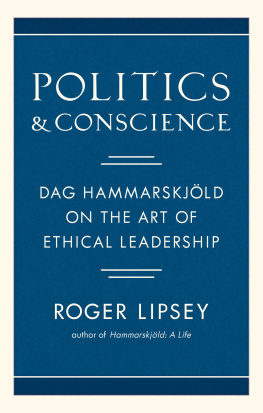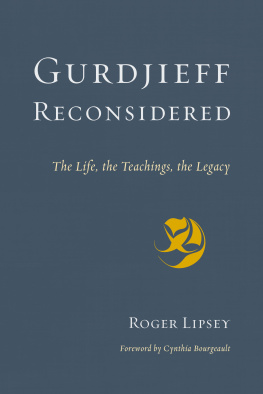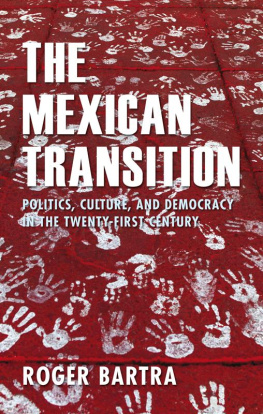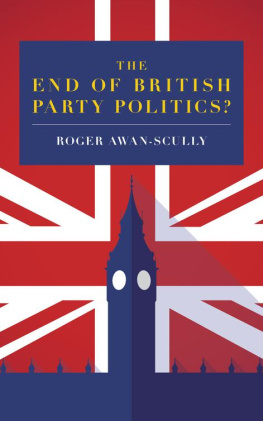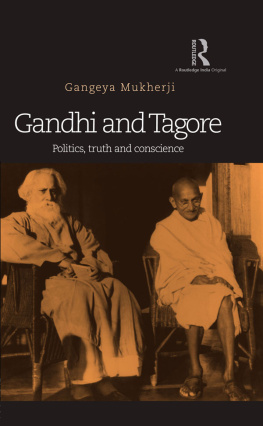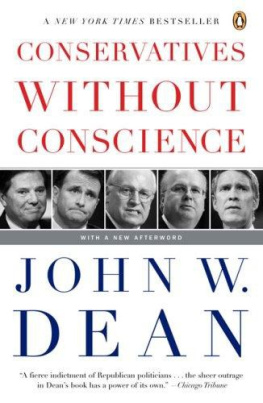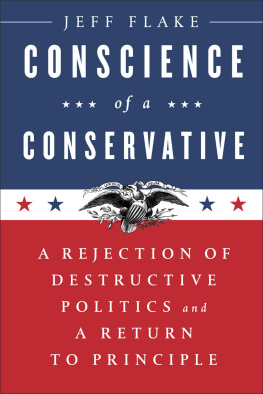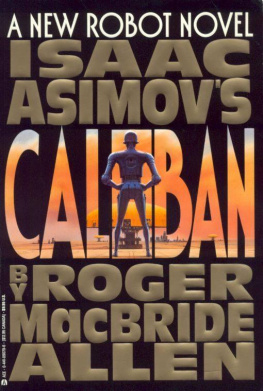Roger Lipsey - Politics & conscience Dag Hammarskjöldon the art of ethical leadership
Here you can read online Roger Lipsey - Politics & conscience Dag Hammarskjöldon the art of ethical leadership full text of the book (entire story) in english for free. Download pdf and epub, get meaning, cover and reviews about this ebook. year: 2020, genre: Religion. Description of the work, (preface) as well as reviews are available. Best literature library LitArk.com created for fans of good reading and offers a wide selection of genres:
Romance novel
Science fiction
Adventure
Detective
Science
History
Home and family
Prose
Art
Politics
Computer
Non-fiction
Religion
Business
Children
Humor
Choose a favorite category and find really read worthwhile books. Enjoy immersion in the world of imagination, feel the emotions of the characters or learn something new for yourself, make an fascinating discovery.
- Book:Politics & conscience Dag Hammarskjöldon the art of ethical leadership
- Author:
- Genre:
- Year:2020
- Rating:4 / 5
- Favourites:Add to favourites
- Your mark:
- 80
- 1
- 2
- 3
- 4
- 5
Politics & conscience Dag Hammarskjöldon the art of ethical leadership: summary, description and annotation
We offer to read an annotation, description, summary or preface (depends on what the author of the book "Politics & conscience Dag Hammarskjöldon the art of ethical leadership" wrote himself). If you haven't found the necessary information about the book — write in the comments, we will try to find it.
Roger Lipsey: author's other books
Who wrote Politics & conscience Dag Hammarskjöldon the art of ethical leadership? Find out the surname, the name of the author of the book and a list of all author's works by series.
Politics & conscience Dag Hammarskjöldon the art of ethical leadership — read online for free the complete book (whole text) full work
Below is the text of the book, divided by pages. System saving the place of the last page read, allows you to conveniently read the book "Politics & conscience Dag Hammarskjöldon the art of ethical leadership" online for free, without having to search again every time where you left off. Put a bookmark, and you can go to the page where you finished reading at any time.
Font size:
Interval:
Bookmark:
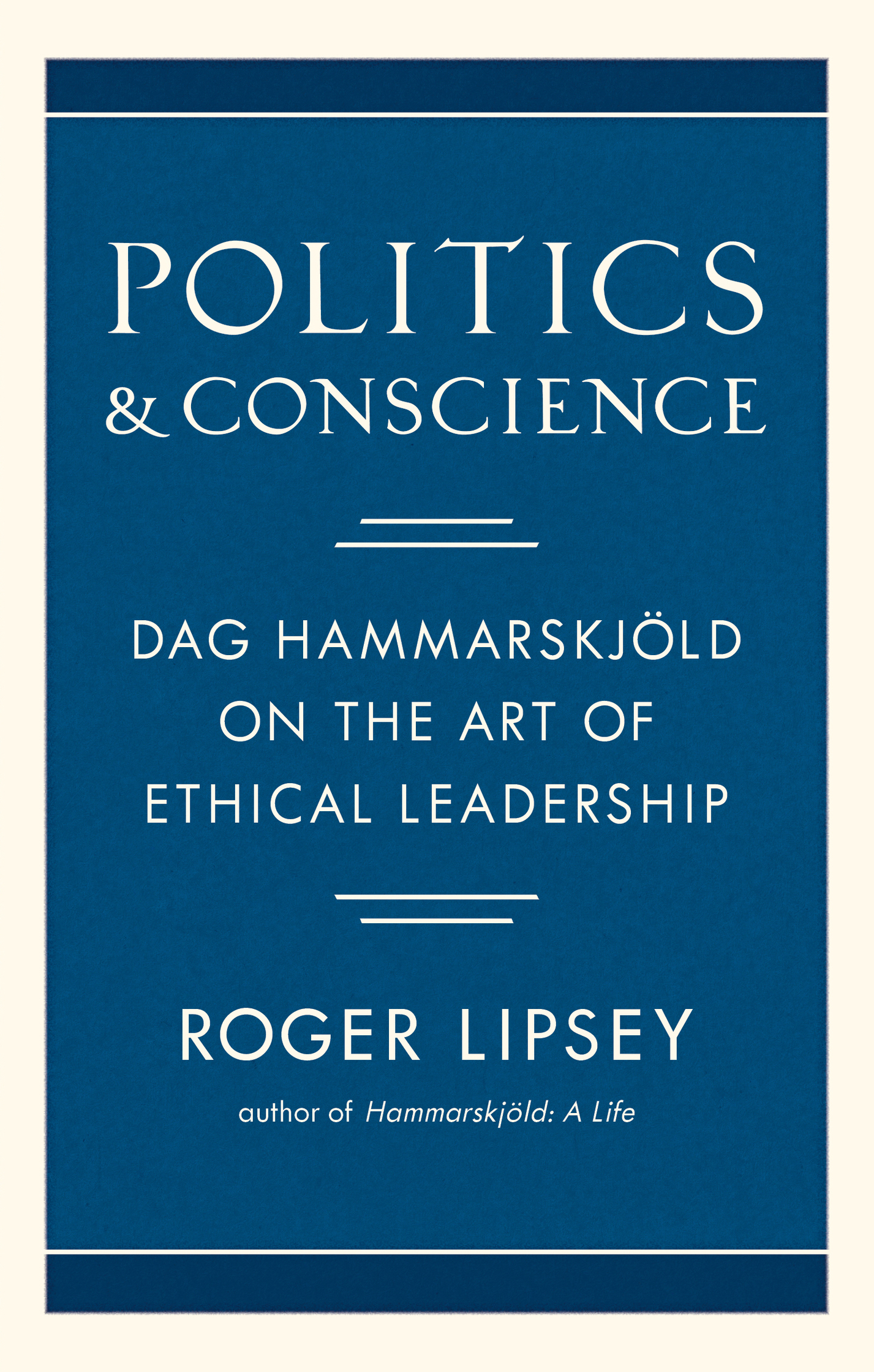
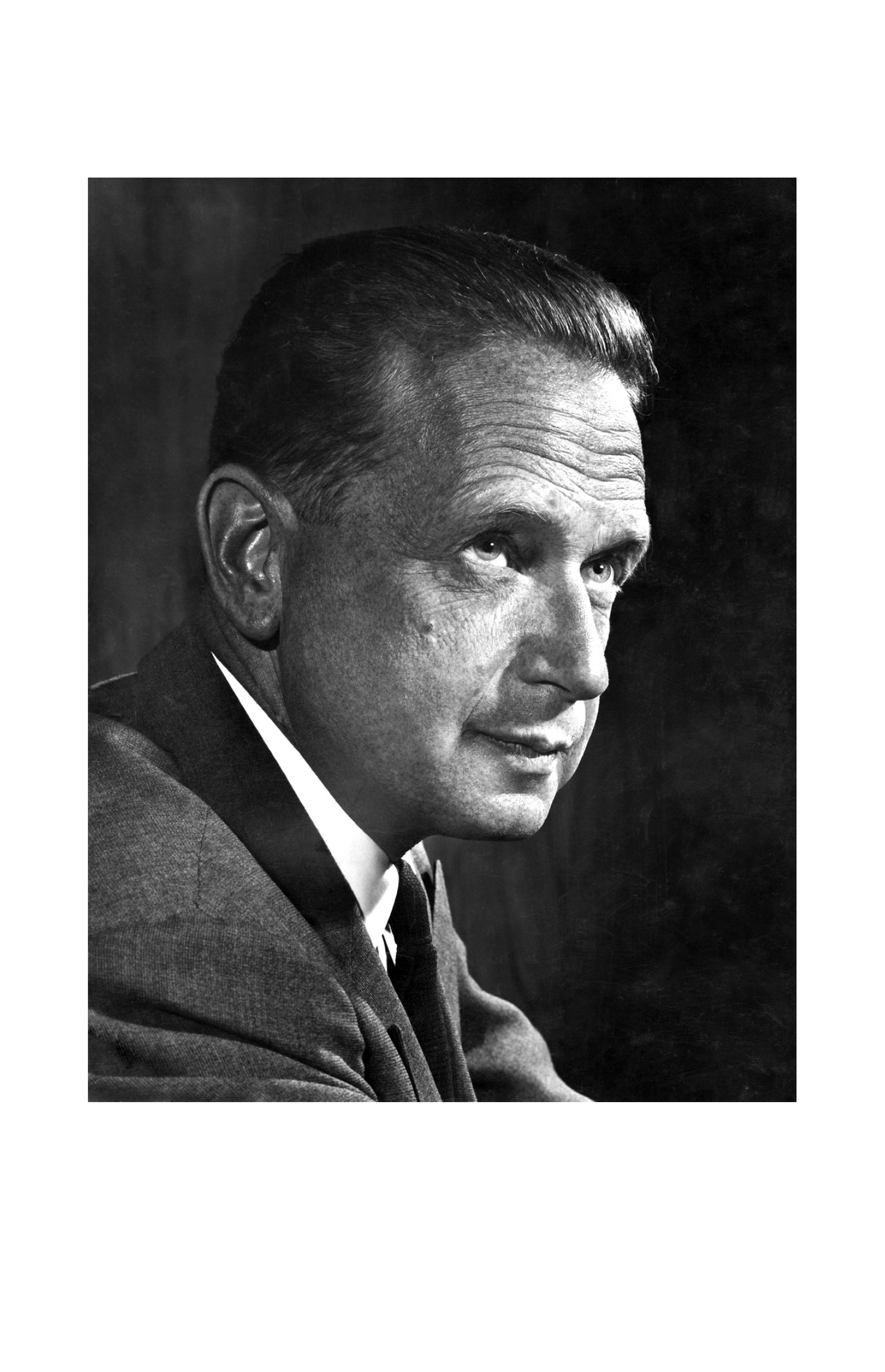
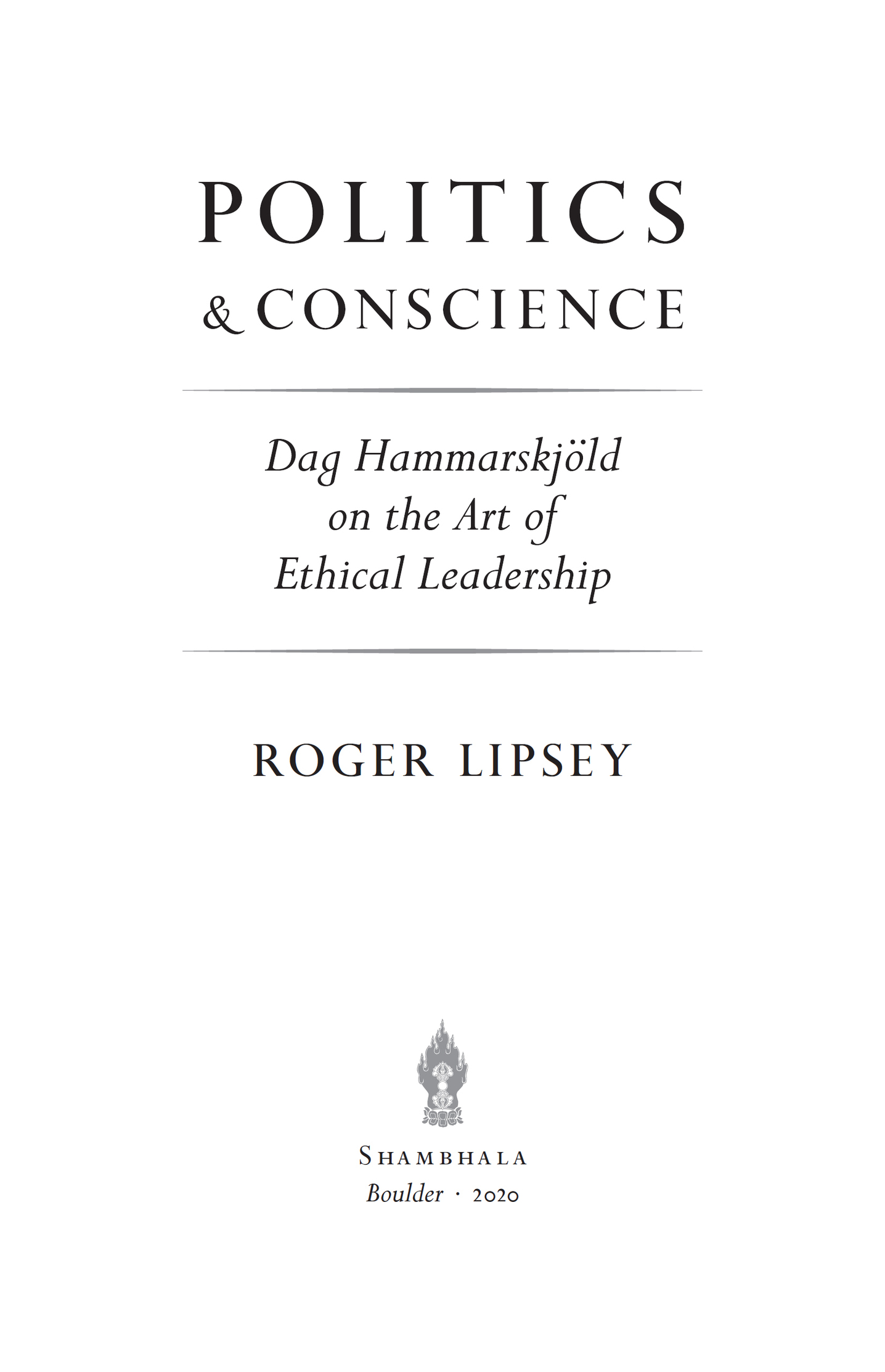
Shambhala Publications, Inc.
4720 Walnut Street
Boulder, Colorado 80301
www.shambhala.com
2020 by Roger Lipsey
Frontispiece photo Yousuf Karsh
All rights reserved.
No part of this book may be reproduced in any form or by any means, electronic or mechanical, including photocopying, recording, or by any information storage and retrieval system, without permission in writing from the publisher.
Book design by Steve Dyer, adapted for ebook
Cover design by Daniel Urban-Brown
LIBRARY OF CONGRESS CATALOGING - IN - PUBLICATION DATA
Names: Lipsey, Roger, 1942 author.
Title: Politics and Conscience: Dag Hammarskjld on the Art of Ethical Leadership/Roger Lipsey.
Description: First Edition. | Boulder: Shambhala, 2020. | Includes bibliographical references.
Identifiers: LCCN 2019022898 | ISBN: 9781611807363 (hardcover)
eISBN9780834842755
Subjects: LCSH: Hammarskjld, Dag, 19051961. | United Nations.
Secretary-General. | United NationsOfficials and employeesBiography. | International relationsMoral and ethical aspects. | DiplomacyMoral and ethical aspects. | StatesmenSwedenBiography. | DiplomatsSwedenBiography.
Classification: LCC D 839.7. H 3 L 573 2020 | DDC 172/.4dc23
LC record available at https://lccn.loc.gov/2019022898
v5.4
a
FOR
Ariane Sabet
Conscious of the reality of evil and the tragedy of individual lives, and conscious, too, of the demand that life be conducted with dignity.
D AG H AMMARSKJLD , Markings
T HIS HANDBOOK IS DEDICATED with good reason to Dr. Ariane Sabet, the brilliant cocreator and manager of the UN Leaders Programme offered by the United Nations System Staff College (UNSSC) in many parts of the world. Wishing for her UN colleagues to know the Hammarskjld heritage in some real depth, Ariane has been kind enough since publication of my biography Hammarskjld: A Life (Ann Arbor: University of Michigan Press, 2013) to invite me to speak at UNSSC gatherings in Turin, Geneva, New York, and Cape Town. Those sessions inspired this handbook; through them I learned that something could be said and heard. I want to record here that my days in the world of the UN among its people invariably strike me as a look into one possible future, a bright one. Thank you, Ariane.
I am so grateful to friends and colleagues who took time to comment on this handbook while it was a work in progress: Susan Williams, Gervase Hood, and David Wardrop in the UK; Hans Kristian Simensen and Henning Melber in Sweden; John Y. Jones in Norway; and Thord Palmlund, Tracy Cochran, and Jeff Zaleski in the United States. As Hammarskjld once acknowledged his colleagues: Thanks to those who have taught me. Errors of fact or interpretation are all my own.
The initial idea for this handbook appeared in conversation with my wife Susan and our friend Rob Gabriele. Subsequent conversation with Dave ONeal, retired senior editor at Shambhala, led to the conviction that the project belonged at Shambhala. Dave had wanted this title: The Way of the Selfless Statesman. So daring.
I have again enjoyed working with Shambhalas Matt Zepelin, lead editor for this handbook, and Emily Coughlin on the editorial side, and with Lora Zorian and Daniel Urban-Brown for design. Loras decision to ask Steve Dyer to design the page layouts was inspired: he was a student of the designer who created the classic look of Dag Hammarskjlds Markings in its first American edition. The family resemblance, altogether welcome, is strong. I am grateful as well to Nikko Odiseos, KJ Grow, Liz Shaw, John Golebiewski, Peter Schumacher, Adria Batt, and the entire Shambhala team that helped bring the book to publication. Thanks also to Dianne Edwards for again looking after permissions and illustrations so ably.
I owe translations from Swedish correspondence in the National Library of Sweden to my late friend and colleague Daniel von Sydow and to my good friend in New York, Thord Palmlund. Details concerning who translated what appear in the notes to Hammarskjld: A Life.
My wife, Susan, remained close to this project. Her regard for Dag Hammarskjld is like my own.
R OGER L IPSEY
Toward the end of his life, after years of experience as United Nations secretary-general, Dag Hammarskjld wrote to a Swedish friend a word of explanation about why he had not set down in full his understanding of politics and international relations. The mission and formula for our generationI think I know them, perhaps I even live them, he wrote. But I could not formulate them in a way that would help others. Perhaps I shall be able to do so one day when I can see what I experience every day in a more neutral perspective. We shall never know what that book would have been. This book tracks that missing book.

D AG H AMMARSKJLD : the second secretary-general of the United Nations, serving from April 1953 to September 1961. Those years are a little distant, but something of permanent importance was renewed then through his thought and performance in officea code for political leaders and for nations. Hammarskjlds enactment of this code isnt widely enough recognized. It should be common knowledge. John F. Kennedys assessment of him as the greatest statesman of our century was no overstatement, and centuries dont necessarily set limits. We still need Hammarskjlds insights.
He is typically remembered as the quintessential European: fluent in four languages, degrees in law and economics, observant of diplomatic courtesies, lighthearted and relaxed when possible, decisive when needed. He seems forever young or nearly so because he took office at age forty-seven, youthful looking, and died little more than eight years later under grievously suspicious circumstances in an air crash in Africa (see appendix 1). Some think of him as an idealist or visionary, but neither description captures his political understanding. A visionary, yesbut he never promised paradise. A year into his tenure in office, he was clear on that point: It has been said that the United Nations was not created in order to bring us to heaven, but in order to save us from hell. No illusions here, but there was no limit to his commitment to the values and global role of the UN.
Hammarskjlds focus in these few words is the United Nations. That is to be expected: the UN was his professional world, his duty station. But his political insights are not circumscribed by the UN; they belong to us all. The UN provided him an intricate zonecrowded with competing national agendas, visiting heads of state, incidents, and full-blown crisesin which he experienced as a leading participant virtually every kind of conflict and every measure to reduce or eliminate conflict. He experienced, as well, and led efforts to secure greater economic welfare, social justice, and stability in countries and cultures of widely differing character. The men and women dispatched as ambassadors to the UN by their respective countries were often the best of the breed: colleagues and adversaries for Hammarskjld, exemplars of thoughtful dignity and ideological fury, of good will and schemingall gathered in one building, sometimes in one hall. The UN was and is a global school; it was certainly his school as both learner and teacher. But we need to release him from the UN if we are to understand what he offers. It isnt only about diplomacy, though that was and is crucial; it is about politics and human relations at every level and in all contextsoften complex, sometimes simple and of the heart. Near the untimely end of Hammarskjlds life, when his friend the novelist John Steinbeck was setting out with his family on a world tour, Steinbeck asked him what would be most important as he traveled. Sit on the ground and talk to people, Hammarskjld answered. Thats the most important thing.
Font size:
Interval:
Bookmark:
Similar books «Politics & conscience Dag Hammarskjöldon the art of ethical leadership»
Look at similar books to Politics & conscience Dag Hammarskjöldon the art of ethical leadership. We have selected literature similar in name and meaning in the hope of providing readers with more options to find new, interesting, not yet read works.
Discussion, reviews of the book Politics & conscience Dag Hammarskjöldon the art of ethical leadership and just readers' own opinions. Leave your comments, write what you think about the work, its meaning or the main characters. Specify what exactly you liked and what you didn't like, and why you think so.

